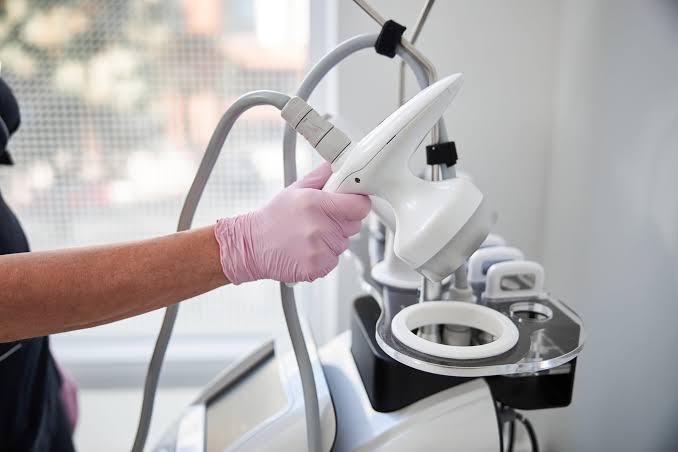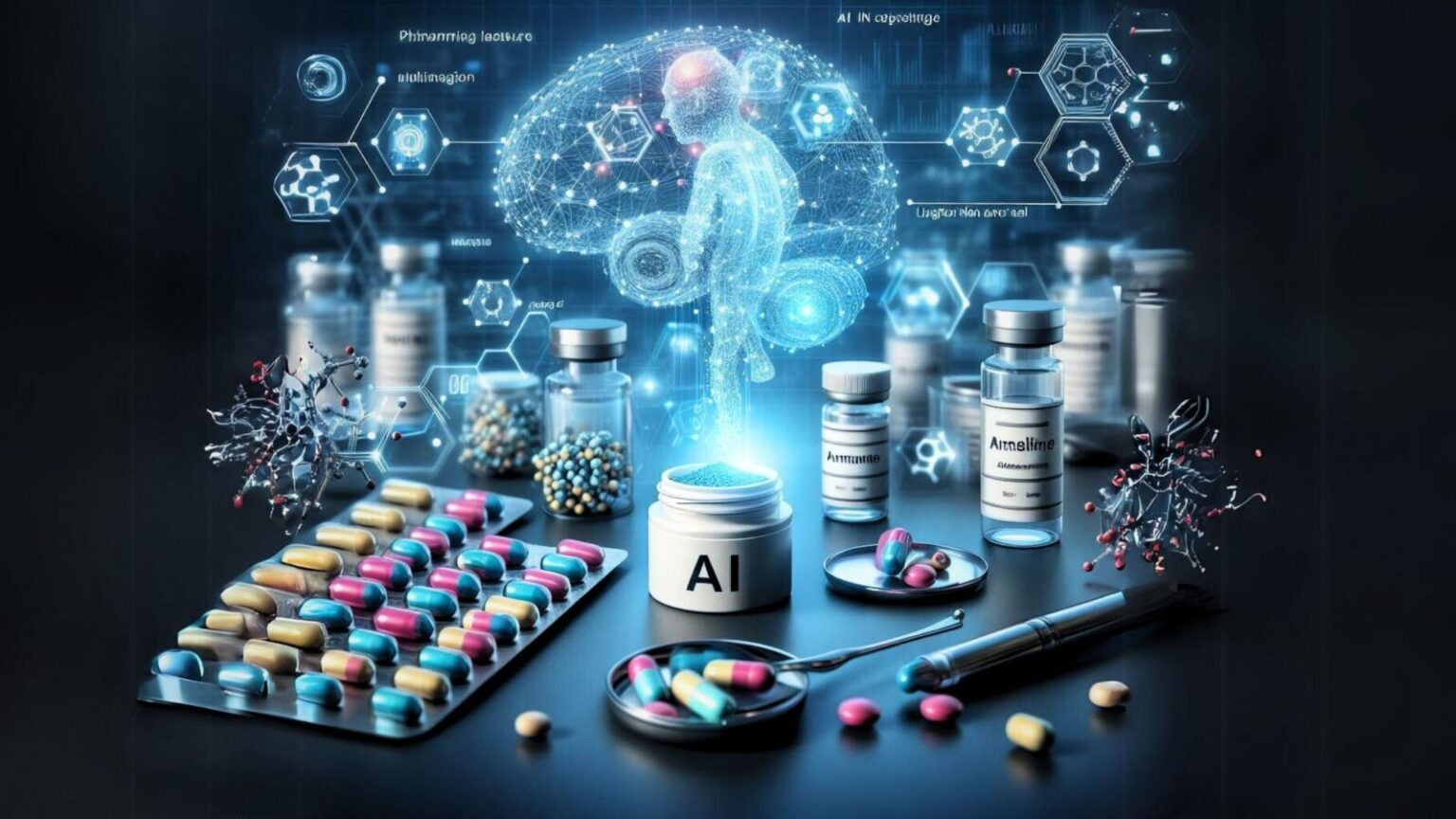
How AI and Machine Learning Are Transforming Skin Diagnosis and Treatment
AI and Machine Learning are revolutionizing skin diagnosis and treatment by enabling early detection, accurate analysis, and personalized care. From smartphone apps to advanced predictive algorithms, these technologies complement dermatologists, monitor treatment progress, and enhance research.
✨ Raghav Jain

Introduction
Our skin is the largest organ of the body, protecting us from infections, regulating temperature, and reflecting our overall health. Skin conditions—from acne and eczema to more serious concerns like melanoma—affect millions worldwide. Traditionally, dermatologists diagnose and treat these conditions through visual examination, patient history, and lab tests. While effective, this process can sometimes be subjective, time-consuming, or prone to human error.
Enter Artificial Intelligence (AI) and Machine Learning (ML). These advanced technologies are revolutionizing dermatology by enhancing accuracy, speeding up diagnosis, personalizing treatment, and even predicting skin health risks. By combining large datasets, imaging techniques, and pattern recognition, AI is creating a future where skin diagnosis and treatment are faster, smarter, and more precise.
In this article, we will explore how AI and ML are transforming dermatology, the science behind these advancements, practical applications, and how they are reshaping patient care. Artificial Intelligence (AI) and Machine Learning (ML) are no longer futuristic concepts; they have firmly established themselves as transformative forces in modern healthcare. Among the many areas experiencing this transformation, dermatology—specifically skin diagnosis and treatment—is witnessing some of the most remarkable advancements. Traditionally, diagnosing skin conditions relied heavily on the expertise and experience of dermatologists, as well as visual examination, patient history, and sometimes invasive procedures like biopsies. However, these conventional methods are not without limitations. Misdiagnosis, delayed detection, and variability in treatment outcomes are common challenges. AI and ML are addressing these limitations, offering the potential for faster, more accurate, and personalized care for patients.
One of the most significant impacts of AI in dermatology is its ability to improve diagnostic accuracy. Skin conditions often share overlapping visual characteristics, making them difficult to differentiate even for experienced practitioners. AI systems, particularly those powered by deep learning algorithms, excel at image recognition. By training on vast datasets of skin images labeled with confirmed diagnoses, these algorithms can learn to identify subtle patterns and anomalies that may be imperceptible to the human eye. Studies have shown that AI models can match—and sometimes surpass—dermatologists in accurately identifying conditions such as melanoma, basal cell carcinoma, eczema, and psoriasis. This capability not only enhances diagnostic precision but also reduces the risk of misdiagnosis, which can have serious implications for patient health.
The speed and scalability of AI-driven diagnostic tools are also revolutionizing skin care. Unlike traditional consultations that may require appointments and waiting times, AI-based mobile applications and platforms can analyze images of skin lesions in real-time. Patients can use smartphones or dermatoscopic devices to capture images of suspicious spots, which the AI system evaluates almost instantly. This immediate feedback allows for early detection of potentially dangerous conditions, such as skin cancer, increasing the likelihood of successful treatment. Furthermore, AI can be integrated into telemedicine platforms, enabling dermatologists to extend their reach to underserved or remote areas. In regions where dermatologists are scarce, AI tools act as a frontline diagnostic assistant, bridging the gap between patients and specialized care.
Machine Learning’s predictive capabilities also play a pivotal role in personalized skin treatment. Beyond diagnosis, AI systems can analyze patient data—including genetics, lifestyle, previous medical history, and treatment responses—to recommend customized care plans. For example, in acne treatment, ML models can predict which medications or skincare routines are most likely to be effective based on a patient’s unique skin profile. Similarly, for chronic conditions like psoriasis, AI can anticipate flare-ups by detecting early signals in skin images or patient-reported data, allowing for proactive management. This predictive approach shifts dermatology from reactive care to preventive and personalized medicine, enhancing both efficacy and patient satisfaction.
In addition to diagnosis and treatment planning, AI is transforming research and drug development in dermatology. Developing new therapies often requires extensive clinical trials and evaluation of treatment responses. ML algorithms can streamline this process by analyzing large-scale clinical data and identifying patterns in treatment efficacy and side effects. This accelerates the discovery of effective therapies and helps tailor drugs to specific patient subgroups. Moreover, AI-driven simulations can model how different treatments will interact with various skin types, reducing the reliance on trial-and-error approaches and minimizing adverse effects.
Another significant advancement is the integration of AI with imaging technologies. High-resolution imaging, combined with AI analysis, provides dermatologists with a comprehensive understanding of skin conditions. Tools like reflectance confocal microscopy, optical coherence tomography, and dermoscopy, when paired with ML algorithms, can detect minute structural changes in the skin, enabling earlier intervention. For example, in melanoma detection, AI can analyze the depth, asymmetry, and border irregularity of lesions with remarkable precision. These capabilities enhance the dermatologist’s toolkit, allowing for more informed decision-making and improved patient outcomes.
Ethical considerations and data privacy are critical in the adoption of AI in dermatology. AI models require extensive data, often including sensitive patient information. Ensuring secure data storage, anonymization, and compliance with regulations is essential to protect patient confidentiality. Additionally, while AI demonstrates impressive diagnostic capabilities, it should complement rather than replace human expertise. Dermatologists’ clinical judgment, empathy, and nuanced understanding of patients’ medical histories remain irreplaceable. The most effective approach involves collaboration, where AI acts as an intelligent assistant, enhancing human decision-making rather than supplanting it.
Despite the impressive progress, challenges remain. AI models are only as good as the data they are trained on. Bias in training datasets—such as underrepresentation of certain skin tones or rare conditions—can lead to disparities in diagnostic accuracy. Addressing these biases requires diverse, comprehensive datasets and continuous model validation. Additionally, integrating AI into routine clinical practice demands training for healthcare professionals, investment in infrastructure, and patient education to build trust in these technologies.
In conclusion, AI and Machine Learning are fundamentally reshaping the landscape of dermatology. By enhancing diagnostic accuracy, enabling early detection, personalizing treatment plans, and accelerating research, these technologies are driving a paradigm shift in skin care. Patients benefit from faster, more precise, and tailored interventions, while dermatologists gain powerful tools that enhance their clinical capabilities. As AI continues to evolve, it promises to make dermatology more accessible, efficient, and patient-centered. While ethical considerations and potential biases must be carefully managed, the synergy between human expertise and AI represents a promising future for skin diagnosis and treatment, where technology and compassion work hand in hand to improve health outcomes.
Understanding AI and Machine Learning in Dermatology
Artificial Intelligence (AI) refers to computer systems capable of performing tasks that typically require human intelligence, such as decision-making, visual perception, and problem-solving. Machine Learning (ML) is a subset of AI where systems learn patterns from data and improve performance over time without explicit programming.
In dermatology, AI and ML systems analyze images of the skin, detect patterns, and identify abnormalities. These systems can be trained using thousands—or even millions—of skin images, learning to distinguish between healthy skin, benign conditions, and potentially harmful lesions.
How AI is Improving Skin Diagnosis
1. Enhanced Accuracy in Detection
AI algorithms can detect skin issues like melanoma, psoriasis, and acne with accuracy comparable to or even surpassing experienced dermatologists. By analyzing microscopic features in skin images, AI identifies early signs that may be invisible to the naked eye.
2. Faster Diagnosis
Traditional diagnosis can require multiple visits, lab tests, or biopsies. AI tools can analyze images in seconds, providing instant feedback to dermatologists and patients, accelerating the treatment process.
3. Predictive Analytics
Machine learning models can predict the likelihood of skin diseases based on patient history, genetic information, and environmental factors. This allows for preventive care rather than reactive treatment.
4. Consistency Across Cases
Human assessments can vary depending on experience or fatigue. AI systems maintain consistent evaluation, reducing the risk of misdiagnosis or delayed detection.
AI-Powered Tools in Dermatology
- Image Recognition Apps
- Patients can take photos of their skin using smartphones.
- AI apps analyze the image for moles, rashes, or infections.
- Immediate recommendations guide whether to seek professional care.
- Dermatoscopic Analysis
- AI examines high-resolution dermatoscopic images of moles or lesions.
- It identifies subtle features like asymmetry, border irregularities, color variations, and diameter changes.
- Teledermatology Platforms
- AI assists dermatologists by pre-screening patient images before virtual consultations.
- Reduces waiting times and increases access to specialist care in remote areas.
- Personalized Treatment Plans
- ML algorithms evaluate past treatment outcomes to suggest optimal therapies.
- For example, in acne management, AI can predict which topical treatment or medication is most effective for a patient’s skin type.
The Role of Machine Learning in Skin Research
- Pattern Recognition: ML identifies correlations between skin symptoms and underlying health conditions, such as hormonal imbalances or autoimmune disorders.
- Predictive Modeling: Algorithms forecast flare-ups for chronic conditions like eczema or psoriasis, allowing timely interventions.
- Drug Development: AI accelerates research by analyzing how different compounds interact with skin cells, reducing time and cost for new treatments.
- Skin Aging Analysis: ML predicts skin aging patterns based on environmental exposure, genetics, and lifestyle, helping in personalized anti-aging therapies.
Benefits of AI and ML in Dermatology
- Early Detection of Skin Cancer
- AI can identify potentially malignant lesions earlier than traditional methods, increasing survival rates.
- Improved Patient Access
- Remote consultations combined with AI pre-screening allow patients in underserved areas to receive timely care.
- Reduced Human Error
- AI systems provide a second opinion, complementing the dermatologist’s expertise.
- Tailored Treatments
- By analyzing a patient’s unique skin characteristics, AI suggests treatments with higher success rates and fewer side effects.
- Data-Driven Insights
- Continuous learning from patient data helps dermatologists understand trends, refine practices, and anticipate disease patterns.
Daily Skin Care Practices Supported by AI
Even as AI and ML improve diagnosis and treatment, daily skin care remains essential. AI-powered apps can help track your routines and suggest adjustments based on your skin’s condition.
Morning Routine
- Use AI apps to analyze morning skin photos for hydration or sun damage
- Apply sunscreen based on AI recommendations for your skin type
- Choose moisturizers and serums suggested by personalized skin AI platforms
Midday Tips
- Monitor skin response after sun exposure or product use
- Track any new rashes or irritation with AI photo logs
Evening Routine
- Cleanse and hydrate while logging skin condition into apps
- Use AI suggestions for optimal night creams or serums
- Track progress over weeks to detect subtle changes
Weekly AI-Enhanced Skin Practices
- Scan your face weekly using AI apps to monitor moles or pigmentation changes
- Evaluate acne flare-ups or eczema patches with AI logs
- Adjust diet or lifestyle based on AI recommendations for better skin health
- Schedule teledermatology consultations if AI flags abnormal patterns
Common Misconceptions About AI in Dermatology
“AI will replace dermatologists.”
→ False. AI assists professionals, providing data-driven insights. Human expertise remains essential.
“AI apps are 100% accurate.”
→ Not true. Accuracy depends on image quality and data diversity. AI should complement, not replace, clinical evaluations.
“Only tech-savvy people can use AI skin tools.”
→ Incorrect. Many apps are user-friendly and require just a smartphone and camera.
“AI makes skincare impersonal.”
→ Wrong. AI actually allows for more personalized care by analyzing individual patterns and preferences.
Practical Takeaways for Patients
- Capture Clear Images: Good lighting and focus improve AI analysis accuracy.
- Track Regularly: Weekly or daily logs help AI detect patterns or changes.
- Combine with Professional Care: Use AI insights as a guide, not a replacement for dermatologists.
- Stay Updated: AI tools continuously improve; keep apps updated to access the latest features.
- Be Honest with Input: Accurate personal and medical history enhances AI recommendations.
Conclusion
AI and Machine Learning are not just futuristic concepts—they are actively transforming dermatology today. By combining image recognition, pattern analysis, predictive modeling, and personalized recommendations, these technologies improve diagnosis accuracy, speed up treatment, and enhance patient outcomes.
From everyday skin monitoring to detecting life-threatening conditions like melanoma, AI empowers both dermatologists and patients with data-driven insights. When paired with regular skincare routines, healthy lifestyle choices, and professional consultations, AI ensures smarter, faster, and safer skin care.
As technology evolves, the future of dermatology promises more personalized, accessible, and effective skin health solutions. Your skin will not only look better but also be treated with the precision it deserves.
Start using AI tools mindfully, track your skin consistently, and combine tech insights with expert guidance—your skin will thank you today and tomorrow.
Q&A Section
Q1:- What is AI and Machine Learning in the context of skin care?
Ans :- AI and Machine Learning (ML) use algorithms to analyze skin data, recognize patterns, and predict conditions, enhancing accuracy in diagnosis and personalizing treatment plans.
Q2:- How does AI help in early detection of skin diseases?
Ans :- AI analyzes images and patient history to identify early signs of skin cancer, acne, eczema, and other conditions, often detecting issues invisible to the human eye.
Q3:- Can AI replace dermatologists in diagnosing skin conditions?
Ans :- No, AI complements dermatologists by providing faster, data-driven insights, but expert human evaluation remains essential for final diagnosis and treatment decisions.
Q4:- How is Machine Learning improving personalized skin treatment?
Ans :- ML algorithms analyze individual skin type, genetics, and lifestyle to recommend tailored treatments, skincare products, and preventive measures for better outcomes.
Q5:- What role do smartphone apps play in AI-based skin diagnosis?
Ans :- AI-powered apps allow users to capture skin images and receive instant analysis, early warnings, and treatment guidance, making dermatology more accessible.
Q6:- How accurate is AI in diagnosing skin conditions compared to traditional methods?
Ans :- Studies show AI can match or exceed human accuracy in detecting certain conditions like melanoma, but its effectiveness depends on high-quality data and continuous training.
Q7:- What ethical concerns exist around AI in dermatology?
Ans :- Privacy, data security, bias in training datasets, and reliance on AI for critical decisions are key concerns that require strict regulation and transparency.
Q8:- How does AI assist in monitoring treatment progress?
Ans :- AI tracks changes in skin over time using images and patient inputs, helping dermatologists adjust treatments and predict outcomes more accurately.
Q9:- What emerging AI technologies are enhancing skin care research?
Ans :- Deep learning, neural networks, and predictive analytics are enabling faster drug discovery, new skincare formulations, and insights into rare skin conditions.
Q10:- What is the future of AI in dermatology?
Ans :- AI will integrate with teledermatology, wearable devices, and genomic data to offer highly personalized, proactive, and accessible skin care, while still working alongside human expertise.
Similar Articles
Find more relatable content in similar Articles

AI-Powered Hackers: The New Cy..
In 2025, cyber threats have en.. Read More

Smart Cities: How Technology I..
Smart cities are transforming .. Read More

Solar-Powered Wearables: Can T..
Solar-powered wearables are re.. Read More

AI in Drug Discovery: Faster C..
Artificial Intelligence is rev.. Read More
Explore Other Categories
Explore many different categories of articles ranging from Gadgets to Security
Smart Devices, Gear & Innovations
Discover in-depth reviews, hands-on experiences, and expert insights on the newest gadgets—from smartphones to smartwatches, headphones, wearables, and everything in between. Stay ahead with the latest in tech gear
Apps That Power Your World
Explore essential mobile and desktop applications across all platforms. From productivity boosters to creative tools, we cover updates, recommendations, and how-tos to make your digital life easier and more efficient.
Tomorrow's Technology, Today's Insights
Dive into the world of emerging technologies, AI breakthroughs, space tech, robotics, and innovations shaping the future. Stay informed on what's next in the evolution of science and technology.
Protecting You in a Digital Age
Learn how to secure your data, protect your privacy, and understand the latest in online threats. We break down complex cybersecurity topics into practical advice for everyday users and professionals alike.
© 2025 Copyrights by rTechnology. All Rights Reserved.